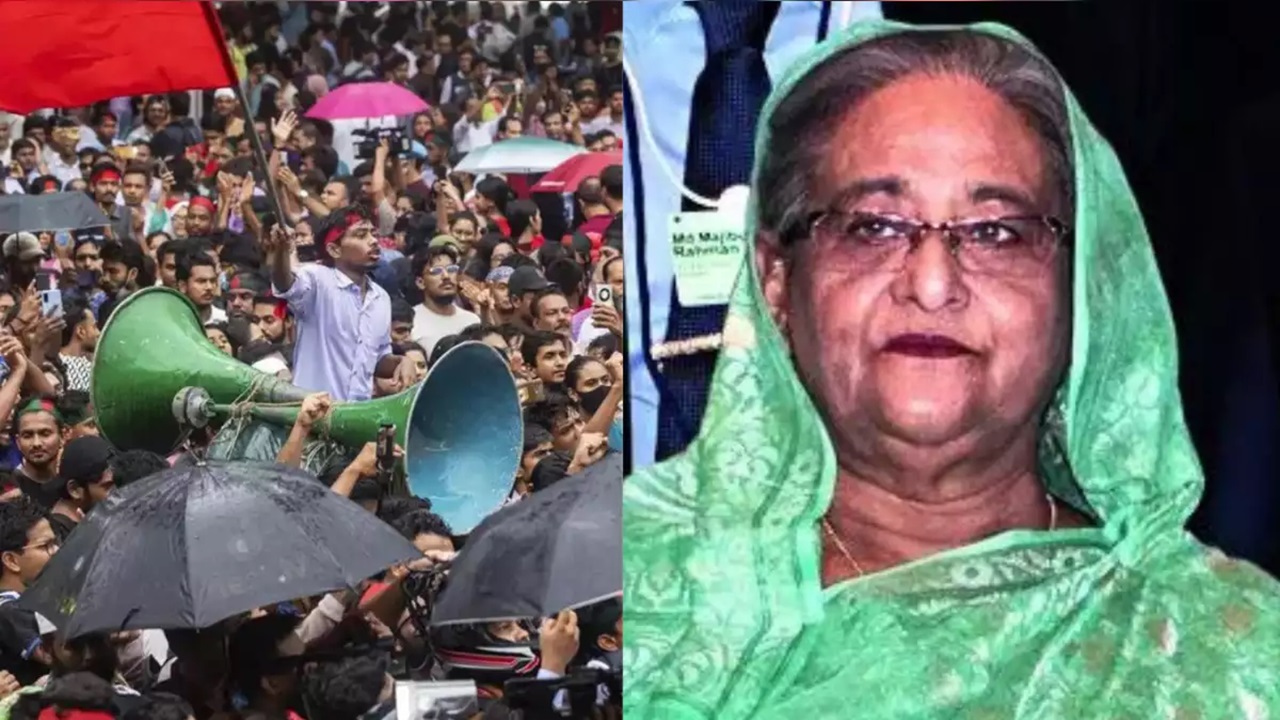
The Fall of Sheikh Hasina
On August 5, 2024, Sheikh Hasina, the Prime Minister of Bangladesh for the past 15 years, faced a dramatic and abrupt end to her tenure. Amid escalating anti governmental protests and violence, the Bangladeshi army intervened, giving Hasina a mere 45 minutes to resign. The chaotic situation quickly deteriorated, leaving Hasina with no choice but to seek refuge abroad. Her destination of choice was India, a trusted ally, and her request for safe passage was swiftly approved.
Hasina’s Escape from Dhaka
As Hasina prepared to leave, she was provided with a military helicopter by the Bangladeshi army. The helicopter transported her from her official residence, Ganabhaban, which was soon besieged by protesters. Accompanied by her younger sister, Rehana, Hasina made her way to an army air base. From there, she boarded a C-130J military transport aircraft of the Bangladesh Air Force.
Initially, there was speculation about her destination. The flight, identified as ‘AJAX1431,’ became a focal point for aviation enthusiasts and security experts alike. Tracking data showed the aircraft near the Indian border by 3 pm, and rumors circulated that Hasina might be headed for Kolkata or Agartala.
Indian Response and Monitoring
As Hasina’s flight crossed into Indian airspace, Indian authorities were on high alert. The aircraft was monitored closely by Indian radar as it flew over Kolkata and then proceeded towards Bihar. The Indian Air Force (IAF) took precautionary measures, deploying two Rafale fighter jets from the 101 Squadron at Hashimara Air Base in West Bengal. These jets were stationed over Bihar and Jharkhand to offer any necessary assistance in case of an emergency.
Indian security agencies maintained constant communication with Hasina’s plane. Reports from India Today indicated that the IAF began tracking the aircraft approximately 10 km from the Indian-Bangladeshi border. The flight continued its journey, passing over Patna and reaching the UP-Bihar border by 4 pm. By 5:45 pm, the C-130 aircraft landed safely at Hindon Airbase, located near Ghaziabad in Uttar Pradesh.
Arrival and Immediate Actions
Upon landing, Hasina was met by National Security Advisor Ajit Doval. The choice of Hindon Airbase for the landing was strategic, given its proximity to Delhi, about 30 km away, which ensured tight security. The aircraft was stationed near Indian Air Force hangars dedicated to C-17 and C-130J Super Hercules aircraft.
Hasina held a meeting with Doval that lasted about an hour, during which they discussed the dire situation in Bangladesh and her future plans. Senior military officials and intelligence personnel were also present. Following this meeting, Hasina was taken to a “safe house” in Delhi. Reports suggest that she may meet her daughter, Saima Wazed, who is based in Delhi and works with the World Health Organization as the regional director for South-East Asia.
Uncertain Future and Diplomatic Engagements
Hasina’s sister, Rehana, who holds UK citizenship, accompanied her. However, there has been no confirmation from London regarding political asylum. The ousted leader was expected to meet with top Indian diplomats, but there was no confirmation of a meeting with Prime Minister Narendra Modi.
The duration of Hasina’s stay in India remains uncertain. However, sources indicated that she might remain in the country until she secures asylum in the UK. On the night of August 5, Prime Minister Narendra Modi chaired a meeting of the Cabinet Committee on Security (CCS) to assess the situation in Bangladesh. Home Minister Amit Shah, Defence Minister Rajnath Singh, External Affairs Minister S. Jaishankar, Finance Minister Nirmala Sitharaman, and senior intelligence officials were present.
India’s Preparedness and Security Measures
In response to the escalating situation, India’s Border Security Force (BSF) has been placed on high alert along the 4,096 km border with Bangladesh. Field commanders have been instructed to assume a vigilant stance and be prepared for any eventuality. The Indian government is also planning evacuation efforts for Indian nationals stranded in Bangladesh, including high commission officials, with the Indian Air Force playing a crucial role in these operations starting from August 6.
The security of Indian diplomatic facilities in Bangladesh has been heightened as a precautionary measure. The unfolding crisis in Bangladesh presents ongoing challenges for New Delhi, requiring continued vigilance and strategic responses as the situation evolves.
(With inputs from agencies)







